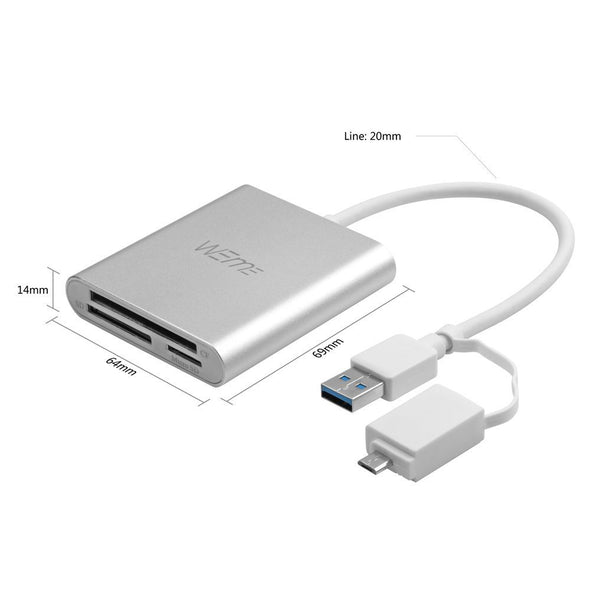
- FAST COMPACT FLASH CARD READER FOR MAC HOW TO
- FAST COMPACT FLASH CARD READER FOR MAC INSTALL
- FAST COMPACT FLASH CARD READER FOR MAC FULL
- FAST COMPACT FLASH CARD READER FOR MAC PORTABLE
- FAST COMPACT FLASH CARD READER FOR MAC PRO
Keep expanding until you find the recovered files you’re looking for.
FAST COMPACT FLASH CARD READER FOR MAC FULL
FAST COMPACT FLASH CARD READER FOR MAC INSTALL
FAST COMPACT FLASH CARD READER FOR MAC HOW TO
Let’s dive in and find out how to recover files from a CF card that’s unreadable by your computer.
FAST COMPACT FLASH CARD READER FOR MAC PRO
You can use Disk Drill free (500MB recovery for free), or purchase a Pro license for $89.00. There are quite a large number of applications available for this purpose, one of which is Disk Drill, which supports all brands of CF cards and can recover nearly any type of file. One of the best options to retrieve that data is by making use of a third-party memory card recovery software solution. If you happen to have a CF card that contains data you cannot access, all is not lost. How to Recover Files from CF Cards Using Recovery Software Physical damage: You might have bent or even broken your CF card.Water damage: Water is the enemy of electronics.

Power surge or outage: If there’s a power surge as your computer is trying to read the CF card, it can become damaged.Corrupted/damaged CF card: The partition table on the CF card might have become unrecognizable by your computer operating system, or you have a physically damaged card.Virus attacks: A virus has rendered your card unreadable.File system errors: The file system on the CF card can become unstable or unreadable by your computer.Card formatting: You might have accidentally reformatted a card that contained files you still need.You’ve accidentally deleted files: This happens more often than you might think, and can occur on the device that uses the card or your computer.And because that card was probably used in a camera or camcorder, you will definitely want those files.īut what can happen to a CF card to cause the data to become unreadable? There are a few reasons this can happen. Someday you might find yourself in a situation where a CF card has data that your computer cannot retrieve. You’ll find these cards in commercial-grade video cameras, where write speeds that are faster than typical SD cards can handle. Most compact flash cards display the minimum write speed directly on the front in the form of X MB/s (Where X is a number to indicate the write speed in MB per second a card can handle).Ī 32GB Transcend CF card with a 120MB/second write speed.įor comparison, the average write speed of an SD card is approximately 12.5MB/second.Īlthough most devices have migrated to SD and microSD cards, there is still plenty of technology out there that requires CF cards.

CF cards are more expensive than SD cards, but are also considerably faster and more durable.

Other than size, the biggest difference between CF and SD cards is speed and cost. A typical CF card measures 42.8 mm by 36.4 mm and can range from 512MB to 128GB of storage. This type of memory has been around since 1994 (originally created by SanDisk) and has become so widespread that its usage has surpassed traditional storage devices (such as harddrives).ĬompactFlash cards are larger than SD and microSD cards.

FAST COMPACT FLASH CARD READER FOR MAC PORTABLE
What is CompactFlash?ĬompactFlash (aka CF) memory is a type of non-volatile, solid-state memory used by many portable devices (such as cameras and camcorders). With a bit of work you can recover that data. If you’ve ever had a memory card either go bad or become unreadable, you know how frustrating that can be.


 0 kommentar(er)
0 kommentar(er)
